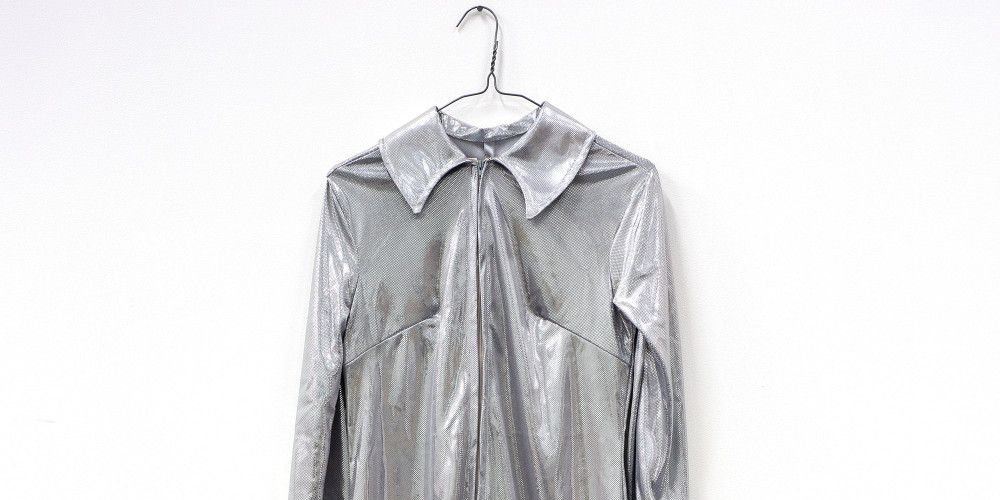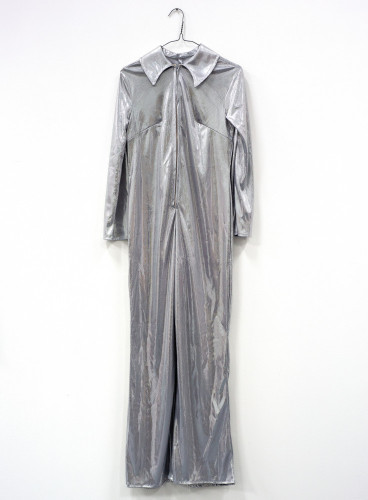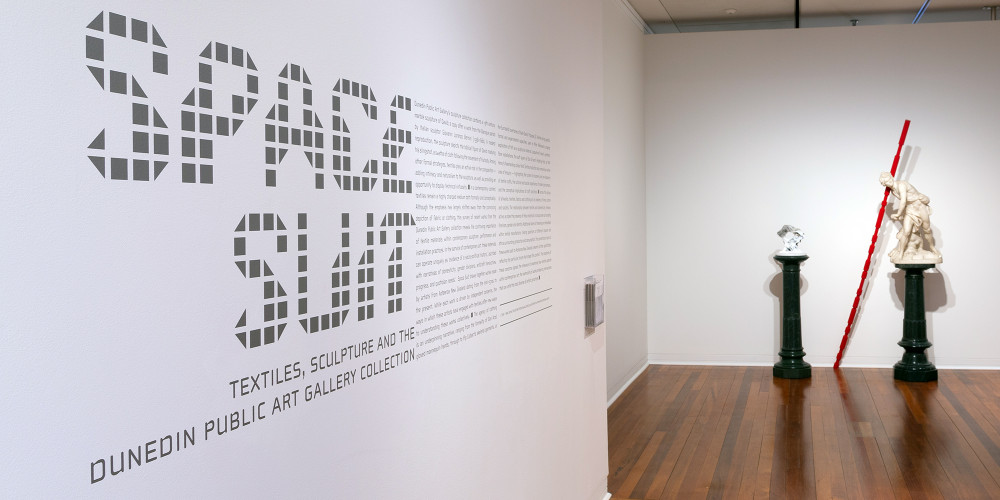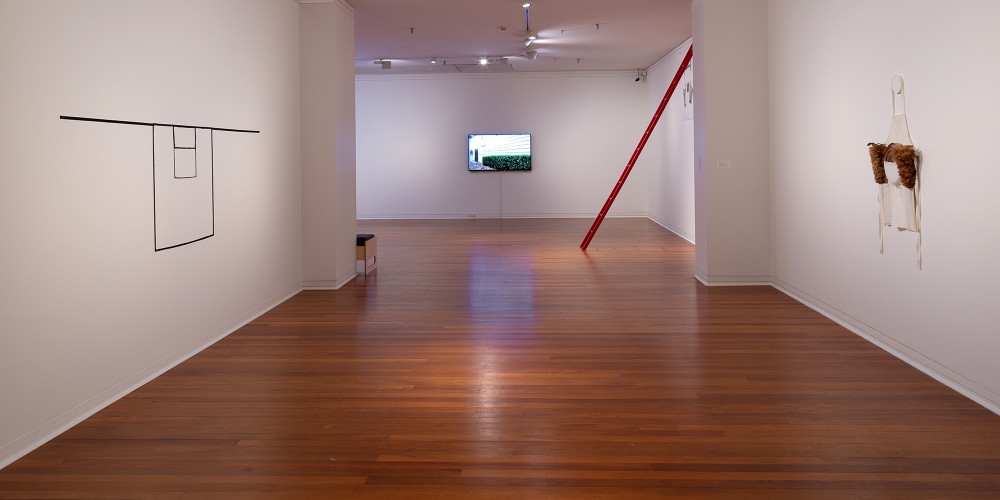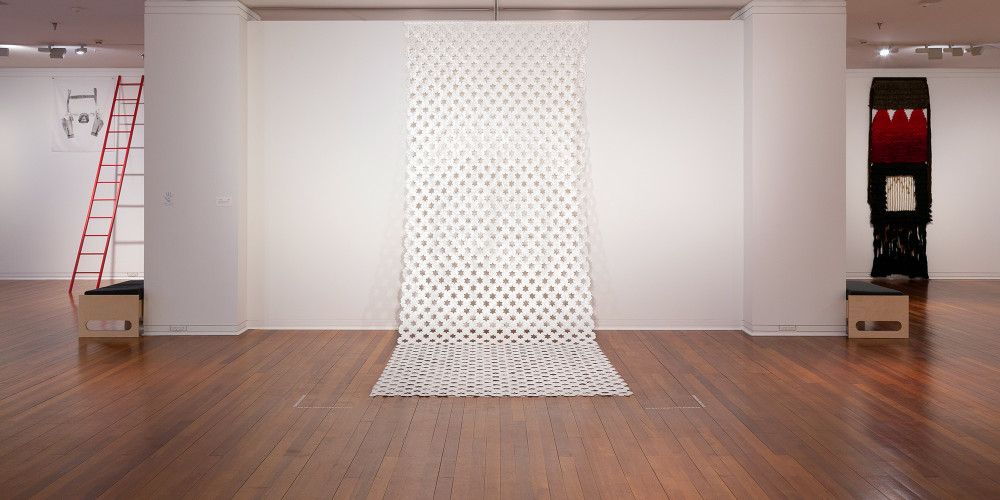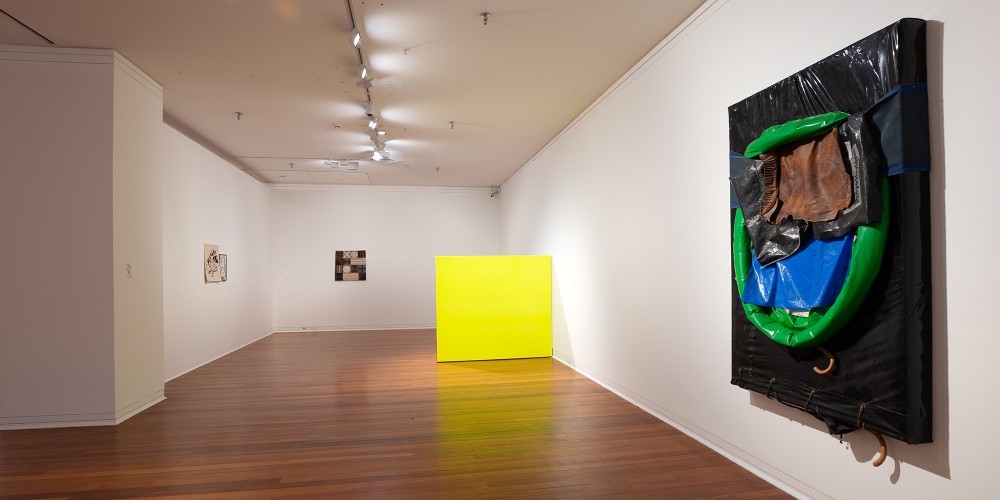Space Suit
Textiles, sculpture and the Dunedin Public Art Gallery Collection
11 August 2018 - 11 November 2018
Dunedin Public Art Gallery’s sculpture collection contains a 19th century marble sculpture of David; a copy after a work from the Baroque period by Italian sculptor Giovanni Lorenzo Bernini (1598-1680). A modest reproduction, the sculpture depicts the biblical figure of David readying his slingshot, a swath of cloth following the movement of his body. Among other formal strategies, textiles play an active role in the composition - adding intimacy and naturalism to the sculpture, as well as providing an opportunity to display technical virtuosity.
In a contemporary context, textiles remain a highly charged medium both formally and conceptually. Although the emphasis has largely shifted away from the convincing depiction of fabric or clothing, this survey of recent works from the Dunedin Public Art Gallery collection reveals the continuing importance of textile materials within contemporary sculpture, performance and installation practices. In the service of contemporary art, these materials can operate uniquely as 'evidence of a socio-political history', ascribed with narratives of domesticity, gender divisions, art/craft hierarchies, progress, and quotidian needs.[1] Space Suit draws together works made by artists from Aotearoa New Zealand dating from the mid-1970s to the present. While each work is driven by independent concerns, the ways in which these artists have engaged with textiles offer new ways to understanding these works collectively.
The agency of clothing is an underpinning narrative, ranging from the formality of Dan Arps’ gloved mannequin hands, through to Pip Culbert’s skeletal garments, or the Surrealist overtones of Kate Davis’ Propose (I). Textiles bring specific formal and experimental capacities, seen in Peter Robinson’s ongoing exploration of felt as a sculptural material, Jacqueline Fraser’s synthetic fibre installations, the soft layers of Don Driver’s Paddling Pool, or Matt Henry’s freestanding colour field. Textile production also remains an active area of enquiry – highlighting the cycles of discovery and re-discovery of textile crafts, the cultural and social importance of making processes, and the conceptual implications of craft practices.
Across this group of artworks, textiles, fabrics and clothing act as markers of time, culture and society. The relationship between textiles and domesticity remains active, as does the presence of these materials in discourses surrounding feminism, gender and identity. Additional layers of meaning are embedded within textile manufacture, raising questions of different impacts and ethics surrounding production and consumption. The connection of each of these works back to Aotearoa New Zealand presents further specificities; reflecting the particular forces that shape this context. The complexity of these concerns signals the relevance of examining how textiles operate within contemporary art; the materiality of works brokering intersections that can unite the most diverse of artistic practices.
[1] Tate – New Yarns: Kirsty Bell https://www.tate.org.uk/context-comment/articles/new-yarns (accessed 12/07/18)
View the exhibition labels – click here
